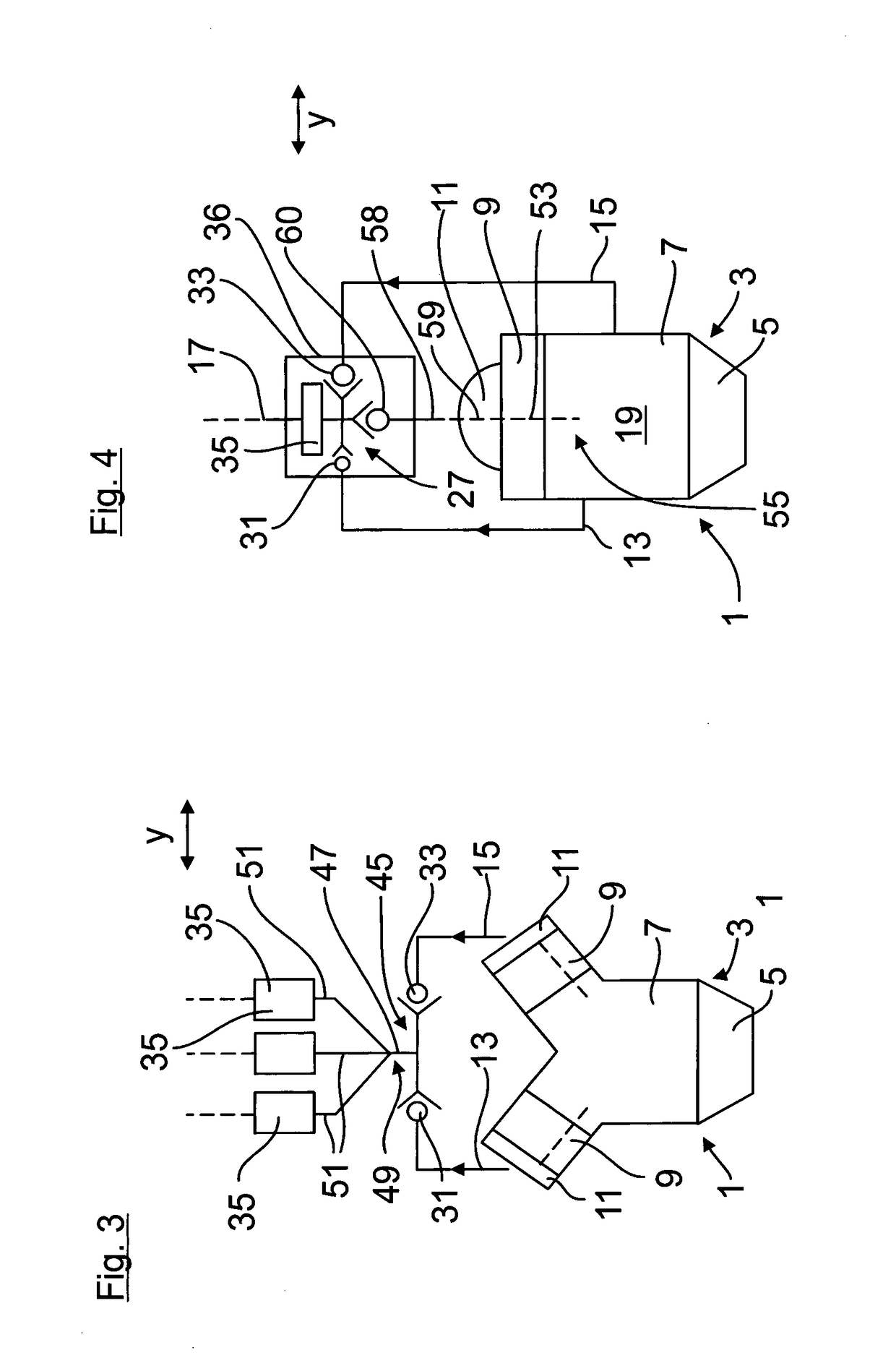Device And Method For Venting A Crank Casing Of An Internal Combustion Engine
- Summary
- Abstract
- Description
- Claims
- Application Information
AI Technical Summary
Benefits of technology
Problems solved by technology
Method used
Image
Examples
first embodiment
[0040]FIG. 1 shows an apparatus 1 according to the invention. The apparatus 1 has an internal combustion engine 3, which is designed in this case for example as an in-line engine, and which comprises an oil sump 5, a crankcase 7, a cylinder head 9 and a cylinder head cover 11. The apparatus 1 furthermore has multiple, in this case for example three, ventilation channels or ventilation lines 13, 15, 17, by which gases flowing into a crank chamber 19 of the crankcase 7, in particular blow-by gases, can be conducted into an intake tract 21, indicated by dashed lines, of the internal combustion engine 3. As an alternative to the introduction into the intake tract 21, it is also possible for the gases flowing into the crank chamber 19 to be conducted directly into the atmosphere or into the surroundings of the internal combustion engine 3, if the gases, before being introduced into the atmosphere, are also purified or cleaned by a suitable cleaning device.
[0041]The ventilation channels 1...
seventh embodiment
[0051]FIG. 7 shows the apparatus 1. The internal combustion engine 3 is formed in this case as a four-cylinder in-line engine. The apparatus 1 has in this case multiple, in this case for example four, ventilation channels 67, which each have a channel section 69 arranged outside the internal combustion engine 3 and a channel section 71 running through the internal combustion engine 3. The channel section 69 is formed here by a pipeline that opens out at the cylinder head cover 11. Here, the channel section 71 runs through the cylinder head cover 11 and through the cylinder head 9 to the crank chamber 19.
[0052]Furthermore, gas inlet openings 73 of the ventilation channels 67 are in this case arranged so as to be distributed uniformly over the crank chamber 19 in an internal combustion engine longitudinal direction x. It is achieved in this way that, in any inclination of the internal combustion engine 3 about a transverse axis formed by the internal combustion engine transverse direc...
second embodiment
[0061]FIGS. 13 and 14 show the shut-off valve 31. The shut-off valve 31 is formed in this case by a float valve arranged in a labyrinthine, U-shaped section 93 of the ventilation channel 13. The U-shaped section 93 has, as viewed in a fluid flow direction, a first U limb 95, a U base 97 and a second U limb 99. The shut-off valve 31 is in this case arranged for example in the second U limb 99 of the U-shaped section 93.
[0062]The shut-off valve 31 has in this case a float body 101 formed as a sealing element and which is pressed against a corresponding sealing seat 103 in order to shut off the fluid flow through the ventilation channel 13 and which opens up a defined flow cross section in order to enable the fluid flow through the ventilation channel 13. Here, FIG. 13 shows the float body 101 in its closed position, in which it shuts off the fluid flow through the ventilation channel 13. FIG. 14 shows the float body in its open position, in which the float body 101 enables the fluid f...
PUM
 Login to View More
Login to View More Abstract
Description
Claims
Application Information
 Login to View More
Login to View More - R&D
- Intellectual Property
- Life Sciences
- Materials
- Tech Scout
- Unparalleled Data Quality
- Higher Quality Content
- 60% Fewer Hallucinations
Browse by: Latest US Patents, China's latest patents, Technical Efficacy Thesaurus, Application Domain, Technology Topic, Popular Technical Reports.
© 2025 PatSnap. All rights reserved.Legal|Privacy policy|Modern Slavery Act Transparency Statement|Sitemap|About US| Contact US: help@patsnap.com



